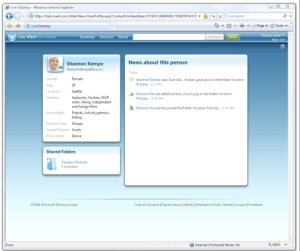Live Mesh, one of Microsoft’s earliest cloud services which launched in beta back in 2008, once looked poised to become Microsoft’s main platform for cloud storage, file syncing, and remote access. At the time, though, Microsoft’s cloud strategy was still up for grabs and it often felt like the company never quite knew what to do with Live Mesh. Today, Microsoft has a cloud strategy, but Live Mesh isn’t a part of it, so it doesn’t come as a major surprise that the company just announced that it will officially retire the service on February 13, 2013.
 While Live Mesh once had “a few million” users, according to Microsoft, there are now fewer than 25,000 active users on the service. Those remaining users will soon hear from Microsoft and will get “a set of instructions on how to keep their files in sync and alternative options for some of the features they’re still using.”
While Live Mesh once had “a few million” users, according to Microsoft, there are now fewer than 25,000 active users on the service. Those remaining users will soon hear from Microsoft and will get “a set of instructions on how to keep their files in sync and alternative options for some of the features they’re still using.”
“With the significant investments in bringing the DNA of Mesh together with SkyDrive, there are now over 200 million people that have used SkyDrive, and more and more are making the move every day. So while Windows Live Mesh was at one point used by a few million people, most have made the move and there are now less than 25,000 active users of Windows Live Mesh.”
Unsurprisingly, Microsoft recommends that the remaining Live Mesh users move to SkyDrive, Microsoft’s central hub for its consumer cloud services.
Live Mesh was, in many ways, a prototype for the likes of Dropbox and, of course, Microsoft’s own SkyDrive. At one point, it even looked as if it could form the basis of a browser-based desktop and OS from Microsoft. Some pundits even saw it as Microsoft’s answer to Google Docs. Mesh had cloud storage, folder sharing, syncing and – because this was 2008 – RSS feeds. I remember using the remote desktop feature quite a bit, too. Over time, however, Microsoft just abandoned the project (as it was wont to do at that time) and launched a few other syncing and storage options that ended up competing with each other.
